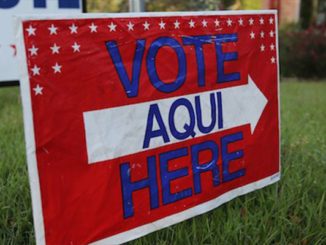“We are working hard to get 10 Senate Republicans just to see if it’s viable,” said one leading immigration overhaul advocate, who asked to remain anonymous while discussing internal strategy. But, the advocate added, given “that Trump continues to drive the calculus about their next election,” there’s little expectation that 10 Republicans votes are ultimately available.
As a result, the principal energy among immigrant advocates is toward convincing congressional Democrats to legalize as many of the undocumented as they can through the reconciliation process, which requires only a majority vote in the Senate. Their focus isn’t the reconciliation bill now moving on Biden’s Covid relief package, but rather another reconciliation bill that they expect him to unveil in a few weeks, encompassing his broader economic agenda.
The advocates hope to include in that bill legalization for the young undocumented, farmworkers, immigrants who are in the US on so-called
Temporary Protected Status (from countries experiencing natural disasters or political instability) and, beyond that, up to millions of additional undocumented people working in occupations that have been deemed “essential” during the pandemic. Together, those categories, which overlap somewhat, might cover as many as 7 million of the estimated 11 million undocumented workers.
“The feeling is it ends up in reconciliation. That’s what we are driving toward,” the advocate added.
Legalizing the undocumented, who in many cases are longtime residents or have US citizen children, has always been the top priority and moral center of the immigration debate for Democrats. But because the undocumented, by definition, are already living in the US and the vast majority are already participating in the workforce, they would not address the population squeeze that’s tightening on American society.
.
Population growth slows, senior growth explodes
The
slowdown in population growth is one of the most significant changes in the political landscape since Congress last seriously tried to overhaul the immigration laws.
.
In a recent paper, William Frey, a demographer at the Brookings Institution’s Metropolitan Policy Program, noted that from 2019 to 2020 the nation’s population grew more slowly than in any year since 1900. That was obviously influenced by the pandemic, but more troublingly, Frey reported that with deaths rising, births declining and immigration contracting during the Trump years, the nation’s population growth rate from 2010 through 2020 “could be the lowest in any decade since the first census was conducted in 1790.”
.
The details of this slowdown are even more discouraging. While the working-age population is stagnating, the senior population is exploding. Even under current levels of immigration, the
Census Bureau projects that the senior population will grow by nearly 40% from now through 2035, almost exactly 10 times as fast as the working-age population.
.
“Sooner or later people are going to look at this chart and say, ‘We are going to need more people in our labor force. We are going to need more customers,’ ” Frey told me.
.
In a recent
paper, Noorani and co-author Danilo Zak calculated that these trends will produce a precipitous decline in what’s called the “dependency ratio,” the number of working-age adults — defined as those aged 18-64 — available to support each senior. Today there are about 3.5 working-age adults for each senior; by 2060, that number will plummet to 2.7, the lowest in modern times. Such a decline will increase pressure either for cuts in federal retirement programs, difficult tax increases on the working-age population to fund those programs or some combination of both.
.
Despite this looming demographic squeeze, Trump and congressional Republicans repeatedly tried to slash the levels of legal immigration. In
2018 four-fifths of House Republicans and nearly three-fourths of Senate Republicans voted to cut legal immigration by more than 40%. While that bill failed, Trump instituted a dizzying array of administrative actions to reduce legal immigration. And while those changes lowered the level of legal immigration
only relatively modestly from its high point in 2016 (when it reached about 1.2 million), Anderson says Trump’s policies would likely have imposed much more severe reductions through a second term, perhaps cutting immigration levels to around only 600,000 annually.
.
Trump’s persistent attempts to restrict legal immigration belied his frequent insistence that he wanted people to come to the US but only if they followed the law. His effort reflected the cultural hostility to immigration of all sorts that now characterizes most of the GOP electorate. In a recent national
survey by the nonpartisan Public Religion Research Institute, almost three-fifths of Republicans agreed with the openly xenophobic statement that “immigrants are invading our country and replacing our cultural and ethnic background”; among Republicans who relied heavily on Fox News for information, agreement soared to two-thirds.
.
In another recent
survey of Trump voters by the conservative Ethics and Public Policy Center, almost two-thirds said they wanted to reduce the number of immigrants admitted to the US and nearly as many said they wanted to deport all of the undocumented — while
most Americans in polls consistently say they would provide the undocumented a path to citizenship.
.
Those attitudes expose the great irony of the immigration debate. The nation’s growing diversity is centered among the young: Frey says the 2020 census will find that for the first time, a majority of the nation’s under-18 population is non-White. But because the US largely cut off immigration from 1924 to 1965, most older Americans are White.
.
I’ve described this demographic contrast as a
collision between “the brown and the gray,” and one of its many implications is that through the 21st century, a growing and preponderantly White senior population will depend on an increasingly non-White working-age population to pay the taxes that fund Social Security and Medicare.
.
The older Whites in Trump’s coalition enthusiastically backing Republican politicians who promise to cut immigration are voting to endanger the entitlements on which they rely by slashing the number of working-age taxpayers available to support them.
.
Proposed tweaks to the system
In a
paper published earlier this month, Noorani and Zak argued for reorienting legal immigration policy around that dynamic. They argue the US should set legal immigration levels with the goal of maintaining the dependency ratio at about its current level of 3.5 working-age adults for each retiree. As the senior population grows over the coming decades, that would require roughly a 37% increase in legal immigration — about 370,000 more people a year than the roughly 1 million to 1.2 million annually the US has been admitting.
.
.
“We need to be talking about the future of immigration with the bottom-line self-interest of Americans who want to retire in mind,” Noorani says.
Neither the White House nor congressional Democrats have yet produced an estimate of how many more people their plans would admit, and each seems reluctant to do so. But in the detailed analysis shared with CNN, Anderson calculates that if fully implemented, the Democratic proposal would essentially meet Noorani’s target.
.
Anderson projects that the bill would increase the flow of legal immigrants to about 1.5 million annually. At points over the coming decade, he says, the increase would be even greater, because the bill also would clear out the huge backlogs that now have nearly 3.8 million eligible immigrants waiting for family reunification visas. Under the legislation, he calculates, America’s working-age population would grow by nearly one-fourth more each year than it would under current policy.
.
The bill does not fundamentally restructure the legal immigration system, which now admits migrants primarily through two principal streams: family reunification and employment. But it adjusts the rules in seemingly technical ways across multiple entry points in that system, systematically widening the spigot. For instance, the legislation seems to make only a minor change in the employment-based system, increasing the number of visas from the current 140,000 annually to 170,000.
.
But in fact, Anderson notes, the bill could more than double the number of employment-based entrants (a top priority for business groups). The reason: While the spouses and minor children of employment-based immigrants are now counted against that 140,000 annual cap, they would be exempted from the new (higher) limit. That would allow all of the slots to be used for employment-based applicants — and would have a further multiplying effect by creating eligibility for the immediate family members of that larger group.
.
Other key changes include allowing all foreign students who earn Ph.D.s in the US to receive green cards, a pilot program allowing cities or counties facing population loss to sponsor immigrants who will relocate there and slightly increasing the number of visas available to countries whose small immigration flows make them eligible for the “diversity lottery” (while again multiplying the impact by exempting spouses and minor children from the count).
.
Another big change: providing visas to any eligible immigrant who has been waiting 10 years or more because of annual caps and country limits that restrict entry for certain family members, such as adult children or siblings, of US citizens. (Typically, Democrats have supported clearing such backlogs before legalizing the undocumented to preempt the criticism that legalization penalizes immigrants who have been legally waiting in line.)
.
While employment- and family-based immigration have been pitted against each other in the previous legislative debates, Noorani says that’s a false choice: Whichever door migrants come through, he notes, the vast majority will eventually join the workforce, which is exactly what the US needs in the coming years.
“You can make a case that anybody who is working age is a net contributor to the system,” he says.
.
But can it get through Congress?
The question is whether any of this has a path toward becoming law. One obstacle is the partisan conundrum noted above: Legal immigration revisions are likely to make the cut only if there’s a comprehensive bill, rather than a package that’s stripped down to try to squeeze it into
reconciliation. But there will be a comprehensive package only if 10 Senate Republicans are willing to vote for one, and given
Trump’s continuing influence that seems dubious — despite strong business community support for such a deal.
.
Timing is a problem too. With millions of
Americans still unemployed as a result of the pandemic, this isn’t the ideal time to talk about the need to add more people to the workforce. Yet experts say America must shape these policies with an eye not on the next few months but on the next few decades.
“It is hard to have this discussion now that we’ve had a terrible economic tragedy, a terrible public health tragedy,” says Holtz-Eakin. “But when you do immigration reform it should be what do you want to the rules of the road to be for the next 20 years. You don’t want to do this every year.”
.
Yet even amid the pandemic, awareness of the population squeeze — and its implications for the economy — may be growing. Neil Bradley, executive vice president and chief policy officer of the US Chamber of Commerce, says, “We are beginning to hear it in the states and almost on a local basis.”
While concerns about population loss have been greatest in rural areas, increasingly “you hear people talking about it in Rust Belt cities,” he notes. “If we’re going to do immigration reform it’s critical that we think through what provisions work best for supporting the economy, and increasing legal immigration is one of the best things you can do to support future economic growth.”
.
The most optimistic scenario is that even if legal immigration loses out in this year’s legislative maneuvering, success in legalizing some portion of the undocumented population through the special reconciliation process will generate momentum for more action later.
.
Jorge Loweree, policy director at the American Immigration Council, an immigrant advocacy group, notes that every attempt to deal with any aspect of the immigration system has ultimately foundered on the emotional issue of addressing the undocumented. If that’s removed from the equation, he says, “there is the prospect … it opens the door to potentially a bipartisan consensus on moving something on legal immigration down the road, with a new coalition. … We can’t quite get to that point, because we are stuck on this threshold question of legalization for the undocumented.”
.
The immigration debate has rarely rewarded optimism in the past few decades. But there’s mounting demographic evidence the US will pay a heavy economic price in the next few decades if it can’t break the immigration stalemate to alleviate its population squeeze.
.
“Without legal immigration, the United States is not going to see sustained population growth and we’ll see declining economic growth as a consequence,” says Cato’s Bier. “It’s just that simple.”
.




